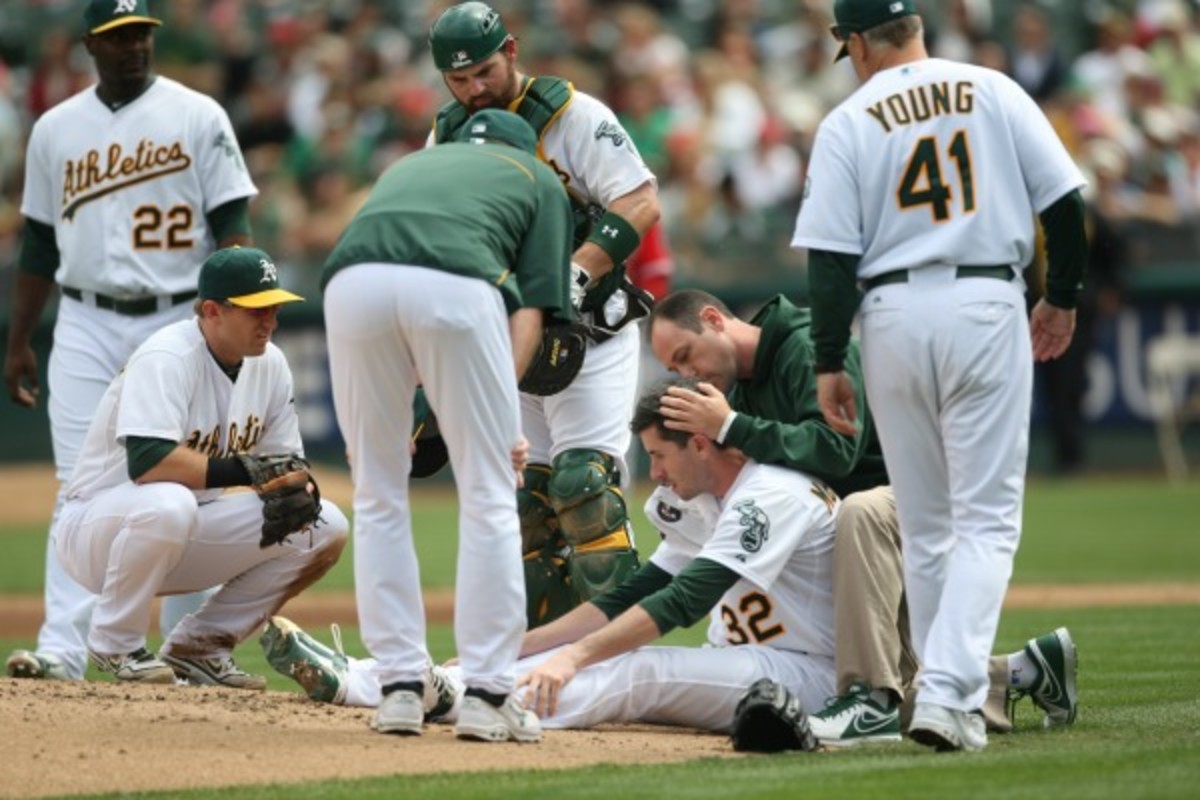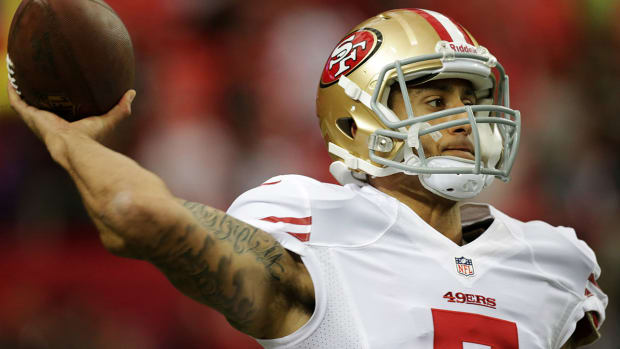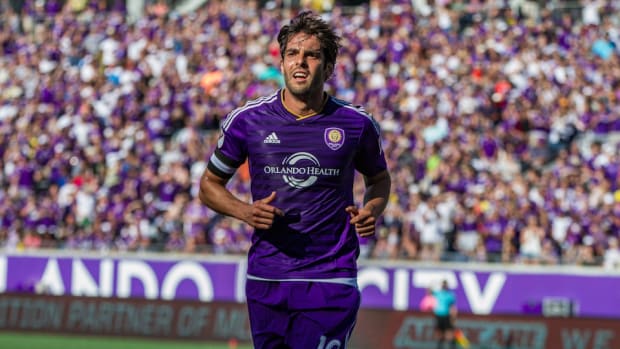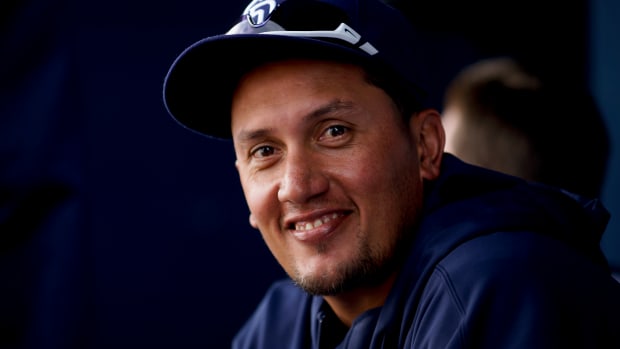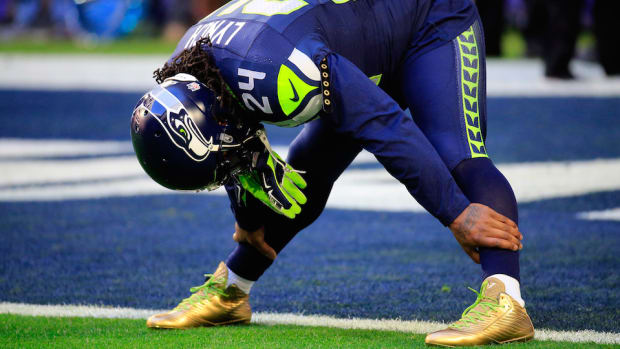Major League Baseball approves protective caps for pitchers
Brandon McCarthy required surgery after being struck by a line drive in September of 2012. (Michael Zagaris/Getty)
Major League Baseball informed teams Tuesday that it has approved a padded protective cap designed to provide more head protection for pitchers struck by line drives.
Dan Halem, MLB executive vice president for labor relations, said the league's testing of numerous prototypes from different vendors for padded caps and approval of a cap came after consultation with the players' association.
"We're excited to have a product that meets our safety criteria," Halem told Outside the Lines, adding that baseball will continue its efforts to come up with more options. "MLB is committed to working with manufacturers to develop products that offer maximum protection to our players, and we're not stopping at all."
The padded caps will be available for spring training and their use will be optional.
The MLB initiative comes 17 months after then-A's pitcher Brandon McCarthy required surgery on life-threatening brain injuries after being struck in the head by a line drive. Outside the Lines research reports 12 MLB pitchers have been hit in the head by line drives in the last six seasons, including five pitchers during a five-month stretch of action in 2012 and 2013. McCarthy was critical of previous protective products available at the time that Blue Jays pitcher J.A. Happ was struck in May.
CORCORAN: Five ex-All Stars attempting comebacks
The company says the caps are a little more than a half-inch thicker in the front and an inch thicker on the sides -- near the temples -- than standard caps, and afford protection for frontal impact locations against line drives of up to 90 mph and for side impact locations at up to 85 mph. The soft padding, isoBlox says, is made of "plastic injection molded polymers combined with a foam substrate" and is designed to diffuse energy upon impact through a combination of dispersion and absorption techniques.
